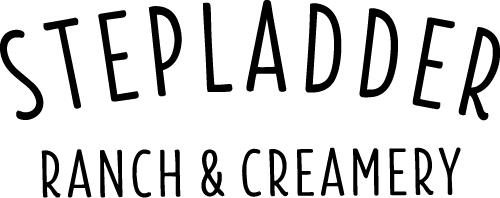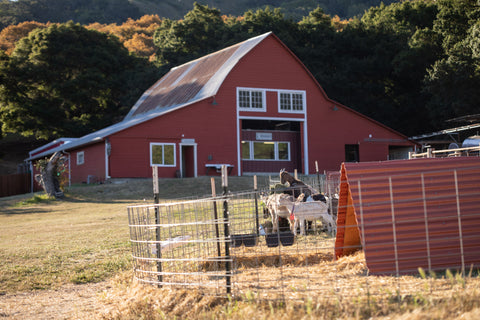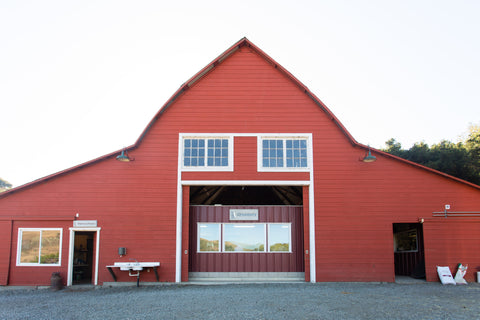Our Humble Beginnings
Stepladder was originally founded in 1870 as a cattle ranch and part of the Harmony Valley Creamery Association. To this day, most of our 750 acre property is still free range grazing land.
The property changed hands several times over the century, before Jack and Beverly Russell of the current operating family acquired it in the 1980s. Jack and Beverly planted 40 acres of Hass avocados, which are visible from most places close to the creamery and goat pens.
We have a unique subtropical microclimate in this valley, which allows us to grow a wide variety of crops. We grow over 200 varieties of citrus and subtropical fruits, including passion fruit, dragon fruit, guavas, bananas, and coffee.
Jack Russell passed away about 10+ years ago and the property was left to his three daughters and their families. His grandson, Jack Rudolph now operates the ranch with his wife Michelle. About 6 years ago, Jack and Michelle turned their hobby interest in farmstead cheesemaking into a licensed creamery operation. Starting with a small herd of 10 goats, we began by making a couple types of goat cheese.
With each passing season our herd has grown, as has the variety of goat and cow’s milk cheeses we now produce in our creamery.
As explained above, the property was changed ownership a few times. By 1867 it was owned by the Martin family, who actually reached out to us in 2022 with some of these amazing photos.
The Martin family ran dairy cows and made butter which they packed in wooden containers called firkins and took to San Simeon to be traded for food and household goods. The butter was shipped by boat to San Francisco. The ranch was in a frost protected area, so they had a large garden and planted citrus and avocado trees.
As seen here, the property structrures haven't changed much over the years, including our iconic big, red barn - which is over 110 years old. This barn was built by Danish shipbuilders- it looks like an upside-down hull! They used steam to make the beams malleable, horses to levy the beams into place, and wooden pegs to hold it all together.
Rooted in Dairy Architecture
We have done some light reinforcing, and we built the structure of our creamery into the barn so we could still see and appreciate this architectural history.
There are several barns in this area built in this fashion. If you are familiar with Solvang, it was during that same period of Danish immigration that they were building barns in this area, in the turn of the 20th century, along with Swiss and Italian immigrants as well.
Although Stepladder was originally founded as a part of the Harmony Valley Creamery Association, this ranch has not been a working dairy in nearly a century. So, 100+ years later, this barn has been converted back to its original destiny- a dairy!
Committed to Sustainability
For us, being a sustainable ranch and creamery is non-negotiable. We love where we live and work, and want to keep it looking as beautiful as when we got here.
It's a constant work in progress, but here are just a few of the ways we are trying to reduce our carbon footprint as a business, so we can feel better knowing our company is minimizing waste and reducing energy.
Using California Sunshine
We have a 50KW solar array on the farm that produces roughly 90 percent of the energy we use here.
Water, Our Most Precious Resource
We rely on spring water and rain catchment that is refreshed by the annual rain for our water source for our orchards and creamery. We also utilize the manure and waste from the goats to fertilize our orchards.
Happy, Well-Fed Piggies
The pigs are mostly a blend of a couple of heritage breeds: large black, old spot, red wattle, and berkshire. We keep 40-80 at a time, grow them over 12-18 months, and they have an 8 acre pen that they generally ignore the fence of and roam freely on the ranch. They take cover underneath an oak grove and have a small lean-to, but are in the outdoors 99% of the time.
Recyclable Packaging
When you order cheese from us online, you'll receive a box, ice packs and of course, your cheese shipment. Everything in our packaging is recyclable and made with recycled materials.








